- Home
- Anne Schraff
Rosa Parks
Rosa Parks Read online
20th Biographies Covers 9/17/07 2:01 PM Page 10
SADDLEBA
20th CENTURY BIOGRAPHIES
20th CENTURY BIOGRAPHIES
CK EDUCA
T I T L E S
Cesar Chavez
TIONAL PUBLISHING
Albert Einstein
Anne Frank
Mahatma Gandhi
Helen Keller
ROSA
Martin Luther King Jr.
Charles Lindbergh
Rosa Parks
Jackie Robinson
Franklin Delano Roosevelt
20TH CENTUR
Rosa Parks grew up in the strongly segregated Southern PARK
P
S
ARK
United States. One day, she had had enough. She would not give up her seat to a white passenger on a bus and was taken to jail. This act inspired the movement for equal rights in the U.S. Find out how this quiet, modest woman Y BIOGRAP
had a strong impact on the world. Learn about her struggle to fight for what was right.
HIES • R
OSA P
THIS HUMBLE
SEAMSTRESS
ARKS
CHANGED
THE FACE OF
THE CIVIL
RIGHTS
MOVEMENT
SCHRAFF
BY ANNE SCHRAFF
Parks Book 9/17/07 12:22 PM Page 1
ROSA
PARKS
BY ANNE SCHRAFF
Parks Book 9/17/07 12:22 PM Page 2
Development: Kent Publishing Services, Inc.
Design and Production: Signature Design Group, Inc.
SADDLEBACK EDUCATIONAL PUBLISHING
Three Watson
Irvine, CA 92618-2767
Web site: www.sdlback.com
Photo Credits: pages 28, 37, Library of Congress; page 59, The Rosa Parks Library and Museum Copyright © 2008 by Saddleback Educational Publishing.
All rights reserved. No part of this book may be reproduced in any form or by any means, electronic or mechanical, including photocopying, recording, or any information storage and retrieval system, without the written permission of the publisher.
ISBN-10: 1-59905-252-0
ISBN-13: 978-1-59905-252-6
eBook:
978-1-60291-613-5
Printed in the United States of America 1 2 3 4 5 6 10 09 08 07
Parks Book 9/17/07 12:22 PM Page 3
T A B L E O F C O N T E N T S
Chapter 1 . . . . . . . . . . . . . . . . . . . . . 4
Chapter 2 . . . . . . . . . . . . . . . . . . . . . 9
Chapter 3 . . . . . . . . . . . . . . . . . . . . 15
Chapter 4 . . . . . . . . . . . . . . . . . . . . 21
Chapter 5 . . . . . . . . . . . . . . . . . . . . .27
Chapter 6 . . . . . . . . . . . . . . . . . . . . 33
Chapter 7 . . . . . . . . . . . . . . . . . . . . .39
Chapter 8 . . . . . . . . . . . . . . . . . . . . 45
Chapter 9 . . . . . . . . . . . . . . . . . . . . 50
Chapter 10 . . . . . . . . . . . . . . . . . . . . 60
Bibliography . . . . . . . . . . . . . . . . . . 62
Glossary . . . . . . . . . . . . . . . . . . . . . . 63
Index . . . . . . . . . . . . . . . . . . . . . . . . 64
Parks Book 9/17/07 12:22 PM Page 4
C H A P T E R
1
Rosa Parks, an African American seamstress, spent a hard day at her job in Montgomery, Alabama. It was almost Christmas. She had done some
shopping. She headed for the bus. She was looking forward to sitting down.
But, as soon as Parks sat down, the bus driver told her to get up. He told her to give her seat to a white man.
It was the 1950s in America. Black people had to sit in the back seats of the bus. But, if a white person was standing, 4
Parks Book 9/17/07 12:22 PM Page 5
they were expected to give up those seats to the white person. Rosa Parks refused to get up. She was tired of being mistreated and humiliated just because of the color of her skin.
Park’s refusal caused a major court battle. In the end, racial segregation on the buses was declared
unconstitutional. Because of what the quiet seamstress had done, black Americans all over the South took a major step toward equality.
Rosa Parks’ courage helped launch the civil rights revolution.
Rosa Louise McCauley was born on February 4, 1913, in Tuskegee, Alabama. Her mother, Leona, was a teacher. Her father, James, was a carpenter. Leona McCauley worked hard, cooking and cleaning. James McCauley traveled all around the state doing carpentry work.
5
Parks Book 9/17/07 12:22 PM Page 6
When Leona McCauley was expecting her second child, she moved in with her husband’s parents. The house was crowded. Leona was very unhappy.
One day, she packed up baby Rosa.
She moved back to her own parents’
house in Pine Level, Alabama. Rosa did not see her father again very much. She saw him once when she was a toddler.
She saw him again as an adult.
Rosa’s brother, Sylvester, was born at their grandparents’ house. Rosa liked it there. She loved her grandparents.
When Rosa was about six-years-old, something frightening happened. Her grandfather was sitting by the front door with a shotgun across his knees.
He told Rosa that the Ku Klux Klan was in the neighborhood. The Ku Klux Klan is a terrorist organization that attacks African Americans.
6
Parks Book 9/17/07 12:22 PM Page 7
Rosa’s grandfather said he would be ready if they tried to break in and harm his family. The Ku Klux Klan did not break in. But, Rosa felt sad that there were white people who would try to harm black people.
Rosa learned an important lesson from her grandfather. You have to stand up for your family and for your principles.
When Rosa was older, she got a job picking cotton for fifty cents a day.
Many black children in the area worked picking cotton.
Rosa worked from early morning to sundown. It was very hot, and the sun burned down on the children.
As she walked up and down the rows of cotton, she got big, red blisters on her feet. Since the blisters hurt so much, she moved up and down the rows of cotton on her knees. The children had to be 7
Parks Book 9/17/07 12:22 PM Page 8
very careful that they did not get blood from their blisters on the cotton.
At age nine, Rosa started school. There was a nice school for white children and a rundown school for black children. In Rosa’s classroom, sixty children were crowded together. But even though it was difficult, Rosa liked to read stories and play games with the other children.
When Rosa was eleven, she went into a store for a soda. The clerk said black children could not sit at the counter and drink sodas. They could have ice cream cones instead. They had to eat them outside the store.
Rosa’s mother had a great love for learning. She wanted Rosa to go to a good school. So, Rosa was sent away from her grandparents’ farm to the big city of Montgomery, Alabama.
8
Parks Book 9/17/07 12:22 PM Page 9
C H A P T E R
2
Rosa Parks was enrolled at
Montgomery Industrial School for girls.
To help pay her tuition, Rosa cleaned two classrooms every day.
The school was in Centennial Hill in Montgomery. Like all public and private schools at the time, it was segregated by race. All the students were black but the teachers were white.
The school was started in 1866 by Miss Alice L. White. Miss White was a 9
Parks Book 9/17/07 12:22 PM Page 10
>
Northern white woman who wanted to help the black people get educated after the Civil War.
Miss White was very strict, but she loved her students. They loved her back because they could see she wanted a better life for them.
Rosa learned a lot from Miss White.
She learned a sense of pride. Rosa was a good student. She obeyed her teachers like she obeyed her mother at home.
It was exciting for eleven-year-old Rosa to live in a big city like Montgomery. For the first time in her life, Rosa heard African Americans criticizing segregation.
Rosa thought there was no way to stop segregation. But, she heard an exciting story of how some black people tried to end segregation twenty years earlier.
10
Parks Book 9/17/07 12:22 PM Page 11
In 1900, some black leaders in Montgomery were very upset about how black trolley riders were forced to sit in the back of the trolleys. So, they told black riders to stop using them.
The African Americans in
Montgomery did not use the trolleys for five weeks. They white owners said they could sit anywhere they wanted if they would only come back. The trolley owners were losing money.
So, for a little while, trolley segregation ended in Montgomery. But then, the white people brought it back.
The black riders had to sit in the back again. This story made young Rosa think for the first time that maybe segregation would end one day.
Rosa Parks dreamed of being a teacher like her mother had been. But, when she was sixteen, she learned that her 11
Parks Book 9/17/07 12:22 PM Page 12
grandmother was very sick. So, she hurried back to Pine Level to help.
Then, Rosa’s mother got sick. Rosa cared for her, too. The family needed money. Rosa returned to Montgomery and worked as a housekeeper. She was eighteen. It seemed her dream of becoming a teacher would not come true.
Rosa McCauley met a young man in Montgomery, Raymond Parks. Like Rosa, he was very religious. He was a member of Rosa’s church.
Raymond Parks asked Rosa on a date.
She agreed, mostly because he had a shiny, red car. But slowly, Rosa grew to admire Raymond. He did a lot of reading. She loved to talk to him.
Raymond Parks was working on an important civil rights case.
12
Parks Book 9/17/07 12:22 PM Page 13
A group of young black men were accused
of a terrible crime in
Scottsboro, Alabama. They were called the Scottsboro Boys. They were charged with attacking two white women.
The boys ranged in age from twelve to mid-twenties. They denied the charges.
But, at the time in the South, the words of blacks did not count for much in court. The boys were convicted. All but the twelve-year-old were sentenced to death. The trial lasted only three days.
Raymond Parks and many other black people believed an injustice was being done to these boys. Parks held meetings and raised money to get the boys a new trial. Rosa McCauley admired his dedication to the cause.
It was dangerous for Parks to try to help the Scottsboro Boys. He could 13
Parks Book 9/17/07 12:22 PM Page 14
have been beaten or killed by angry white people. Rosa could see this man had a lot of courage.
Raymond Parks asked Rosa McCauley to marry him. She accepted his proposal. In 1932 they were married.
Rosa was nineteen-years-old, and Raymond was twenty-nine. Raymond Parks was a hard-working barber, as well as a civil rights crusader.
14
Parks Book 9/17/07 12:22 PM Page 15
C H A P T E R
3
Raymond Parks and the other civil rights workers had a victory in the case of the Scottsboro Boys. The United States Supreme Court overturned the convictions. The Court said the young men did not have a fair trial.
Rosa and Raymond Parks did not have money for a honeymoon after their marriage. They moved into a rooming house.
Both members of the newly married couple continued to work. Rosa Parks 15
Parks Book 9/17/07 12:22 PM Page 16
also helped her husband assemble paperwork on the Scottsboro Boys case.
Rosa Parks became more and more involved in the struggle for civil rights for black Americans.
One of the women who had accused the Scottsboro Boys now admitted it was a lie. Even so, the boys were tried again. They were again convicted and sentenced to death.
But, the Supreme Court overturned the second verdict too. The verdict was overturned because there were no African Americans on the jury.
Finally, a compromise was reached.
The four youngest Scottsboro Boys were freed. The others were paroled after a year. One man, however, was in prison until 1950. Rosa and Raymond Parks had helped save the lives of innocent young men.
16
Parks Book 9/17/07 12:22 PM Page 17
In 1932 Rosa Parks finally got her high school diploma. She worked as a nurse’s assistant. She also sewed clothing for white women.
In 1941 she got a job as a secretary at Russell Field Flight School. This was a federal facility, so there was no segregation. Black and white employees worked and ate together.
Rosa Parks loved the freedom of being treated like everybody else. On buses that rode around the base, she could sit in any seat. But, when she left the federal land and boarded a Montgomery city bus, it was different. She had to sit in the back with the other black people.
Rosa’s younger brother, Sylvester McCauley, was drafted in the United States Army. He was to help fight World War II. The military was segregated, so he served in an all black unit.
17
Parks Book 9/17/07 12:22 PM Page 18
Rosa Parks’ interest in civil rights was growing. She joined the National Association for the Advancement of Colored People (NAACP). She
volunteered to work as a secretary for the local chapter. She wrote letters, arranged meetings, and took care of the office. She was very efficient.
In 1945 American soldiers began to return home from the War. Among them were the million black men who had served.
Sylvester McCauley had a fine war record. He helped carry many wounded comrades to safety in bloody battles.
McCauley thought that when he got home to Montgomery he would be respected for his service to his country.
But, returning black soldiers were mocked and sometimes attacked.
18
Parks Book 9/17/07 12:22 PM Page 19
There were white people who wanted segregation to continue. They were afraid the returning black soldiers would demand equality. So, these white people treated the black veterans even worse than before the war.
McCauley was spat on by some white people in Montgomery. He could not find work. So, he took his wife and two children and moved out of the South.
He went to Detroit, Michigan.
Things were not perfect for black people in Detroit, but there was no segregation. McCauley got a good job with the Chrysler Corporation.
Rosa Parks visited her brother in Detroit. She liked the sight of black and white people living together. But, she was homesick for Alabama. She
returned to Montgomery. She decided 19
Parks Book 9/17/07 12:22 PM Page 20
she would work even harder with the NAACP to make Montgomery a fairer place for blacks.
Rosa Parks was invited to speak at a NAACP convention. She was nervous because she had not done that before.
But, she did a good job. She became self-assured.
Rosa Parks got a job at Crittenden’s Tailor Shop in Montgomery. She was an excellent seamstress. She altered men’s suits. She made dresses. Parks also continued to work for the NAACP. She also taught Sunday school. Life was comfortable for them.
20
Parks Book 9/17/07 12:22 PM Page 21
C H A P T E R
4
On the city buses of Montgomery, Alabama, black riders always had to sit in the back of
the bus.
Also, black riders were not treated with courtesy. Drivers often called adult African American women “girl” and adult men “boy.” They did not treat them with the respect they showed other riders. Rosa Parks discussed this humiliating situation with her friends at the NAACP.
21
Parks Book 9/17/07 12:22 PM Page 22
Seventy-five percent of the people riding the Montgomery bus system were black. Most whites had their own cars.
So, the black riders were supporting the bus system. Yet, they were badly treated.
Parks wanted to do something about this. But, she was not sure what she could do. She did not know anything about organizing protests or boycotts.
Some friends of Rosa Parks paid for her to go to a workshop at Highlander Folk School. The school was in the Appalachian Mountains in Tennessee.
There she could learn about working for change in society.
When Rosa Parks arrived at
Highlander School, she was nervous.
Most of the other people were white.
Parks felt strange. But, soon she fit in very well.
22
Parks Book 9/17/07 12:22 PM Page 23
The white people asked her about segregation in Alabama. They were very interested in the stories she told about her experience with the NAACP.
At Highlander School, something happened to Rosa Parks that had never happened before. She was eating food other people made. She had breakfast brought to her on a tray. Parks was forty-two-years-old. It was the first time anybody had waited on her.
After the workshop at Highlander School, Parks returned to Montgomery and her seamstress job. Raymond Parks was now in ill health. He could only work part time. That made it harder on Rosa.
In August 1955 Rosa Parks attended a NAACP meeting. There, she met Rev.
Martin Luther King Jr. for the first time.
23
Parks Book 9/17/07 12:22 PM Page 24
She was very inspired by him. He seemed strong and fearless. Rosa Parks had fresh hope that conditions might indeed change for black people in the American South.
During the summer of 1955, Rosa Parks continued to work hard and volunteer at the NAACP. She did not expect anything dramatic to happen to her. But, her life and the whole system of segregation was about to be shaken.
On a rainy evening on December 1, 1955, Rosa Parks left her seamstress job as usual. She headed home. She ached all over from the long hours she spent hunched over her work. Rosa Parks had bursitis, a problem that causes pain in the joints.

 Unbroken
Unbroken Wildflower
Wildflower The Life of Harriet Tubman
The Life of Harriet Tubman Like a Broken Doll
Like a Broken Doll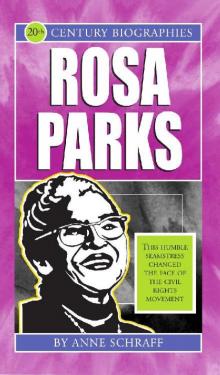 Rosa Parks
Rosa Parks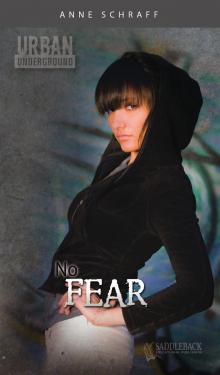 No Fear
No Fear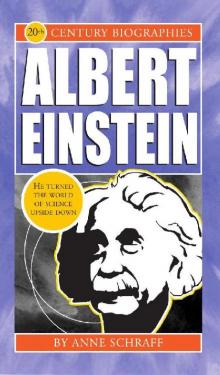 Albert Einstien
Albert Einstien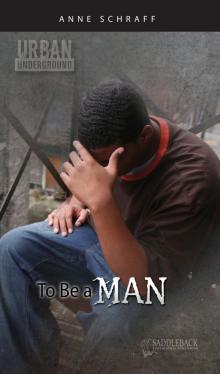 To Be a Man
To Be a Man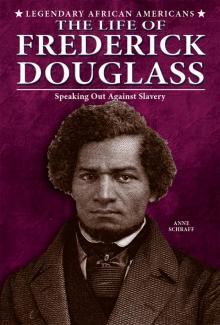 The Life of Frederick Douglass
The Life of Frederick Douglass Someone to Love Me
Someone to Love Me A Matter of Trust
A Matter of Trust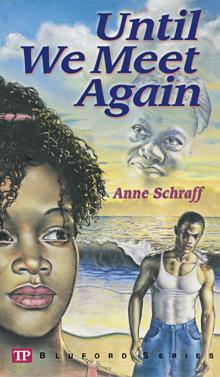 Until We Meet Again
Until We Meet Again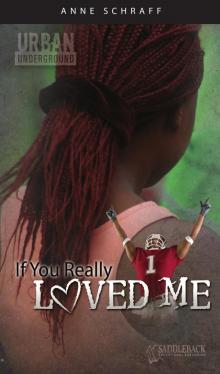 If You Really Loved Me
If You Really Loved Me